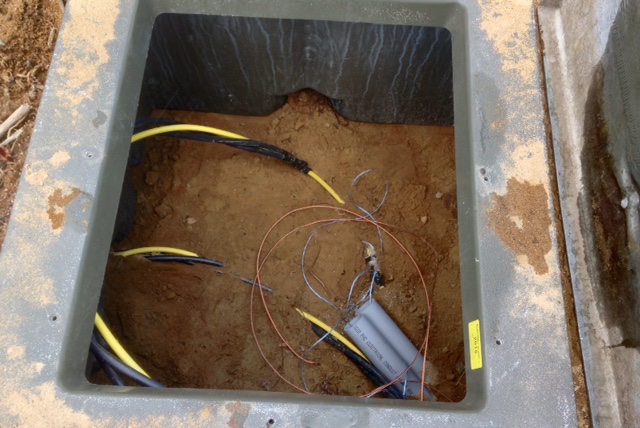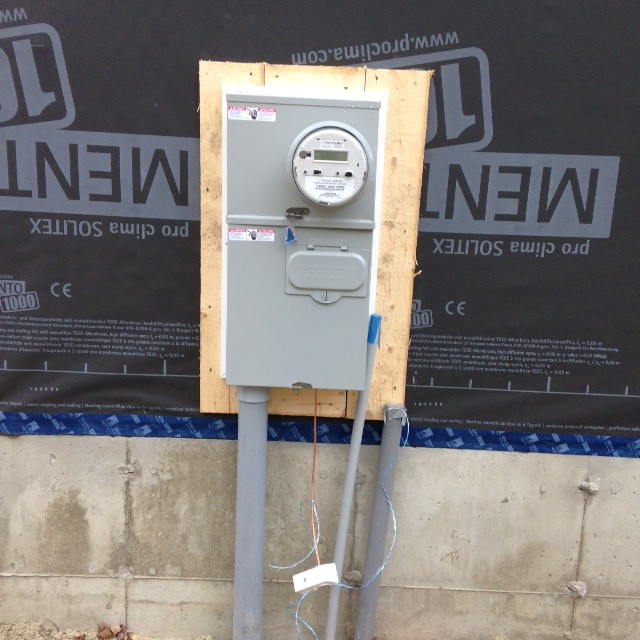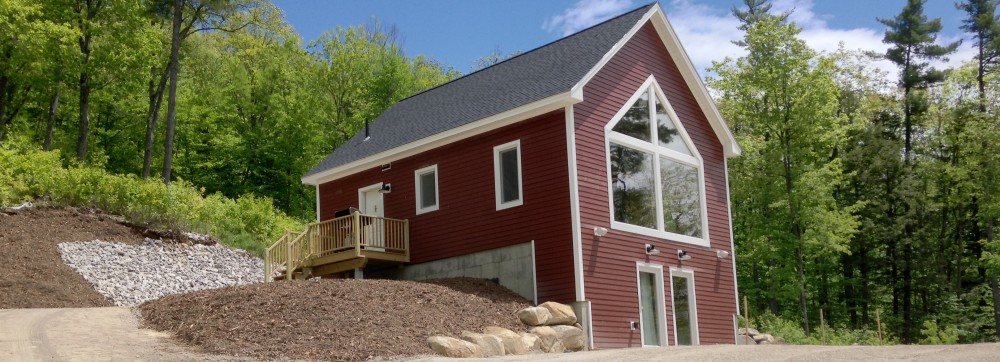The electrician laid the electric cable conduit and pulled the electric wire from the house to transformer. The house is situated about 500 feet off the road which dictated the need for the electric company to extend the primary line nearer the house.
Primary electric line is what you see on the telephone poles strung along the road. The line operates at near 20,000 volts and is capable of supporting multiple houses.
The photo below shows two 2.5 inch conduits from coming off the pole on the street. The conduits provide power in a loop feed configuration. A loop feed consists of two wires that go out and back from the point of origin. The benefit of this configuration is that it is fault tolerant.


At the end of the loop feed, about mid-way between the pole and the house, a transformer pad was set. The transformer converts the 20,000 volts on the primary line to the 110/220 volts on the secondary line.



The transformer sends the secondary power in a single 2.5 inch conduit up to the house. The photo below shows the conduit running next to the driveway up to the house.

The electrician pulled three wires through the conduit. He started by running a pull string from the house to the transformer. To do this he used a vacuum to suck the pull string through the conduit. He then used the pull string to pull a rope through the conduit. At this point he attached the wire bundle to the rope, which consisted of three wires about 1.5in in thickness, and pulled it through the conduit using an electric winch.

The secondary wires were attached to the meter base at the house. The electric company came a couple days later and inspected the work. After passing inspection they set the meter socket and approved the installation for connection to the grid.

